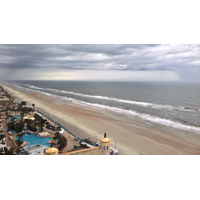
US Invests $3.9 Million for Ocean-based Climate Resilience Accelerators
Diego, $250,000.FloridaCatching the Blue Wave: Accelerating America’s Ocean Economy, Tampa Bay Wave, Inc., $250,000.The Upwell Collaborative Accelerator, Seaworthy Collective, $249,848.HawaiiHITIDE Studio: Guiding the Commercialization Voyage of Ocean-Based Climate Resilient Technologies, University of Hawaii, $250,000.LouisianaCLIMATEx Accelerator Program, The Idea Village, Inc., $250,000.MaineOceanVista: Advancing Ocean Data for Climate Resilience, Gulf of Maine Research Institute, $250,000.MassachusettsVentureWell Ocean-Based Climate Resilience Accelerator, VentureWell, $249,810.Accelerating
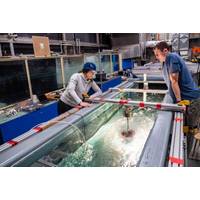
US DOE’s TEAMER Awards $1.3M to Marine Energy Researchers
are currently being accepted through March 1, 2024.Some of the supported projects include tidal turbine blade design testing by Verdant Power, wave energy modelling by Carnegie Clean Energy, researching alternate material design methods for wave energy devices by Columbia Power Technologies, and University of Hawaii-led study that will explore the integration of wave energy production with shore protection in harbor barriers.Supported by the U.S. DOE and directed by the Pacific Ocean Energy Trust, TEAMER Program seeks to accelerate the viability of marine renewables by providing access to the best facilities
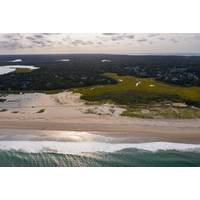
US Awards $6.7 Million for Sea Level Rise and Coastal Resilience Research
to sea level rise, including three projects led by the Cooperative Institute for Research to Operations in Hydrology (CIROH):(CIROH) University of Alabama received over $177,000 to develop nationally consistent coastal flood severity thresholds across the U.S.(CIROH) University of Alabama, University of Hawaii at Manoa and University of Hawai'i Sea Grant received nearly $500,000 to integrate local ecological knowledge into flood modeling, communication, and response across Hawai’i.(CIROH) University of Alabama and The Water Institute of the Gulf received over $284,000 to develop adjusted
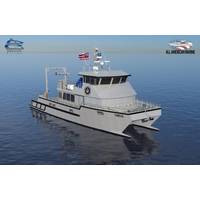
AAM to Build Research Vessel for the University of Hawaiʻi at Mānoa
;12 learning experiences for up to 20 people.“All American Marine remains committed to being on the leading edge of manufacturing techniques and an innovator in merging the latest technology into a functional and proven vessel. We are delighted to have been chosen to build this vessel for the University of Hawaii. This vessel will expand U of H’s environmentally focused research activities and will aid them with their conservation efforts in the Pacific,” said Ron Wille, All American Marine President & COO.(Image: All American Marine

MTS Names Ostrander Executive Director
, industry partnerships, foundation & corporate philanthropy, and research administration. Before his time at the University of Utah, Chris served as the assistant dean and director of strategic initiatives for the School of Ocean and Earth Science and Technology (SOEST) at the University of Hawaii at Manoa. While in Hawaii, he was the co-founder and director of the Pacific Islands Ocean Observing System (PacIOOS). He has launched three companies and helped entrepreneurs and institutions raise more than $450 million in research and philanthropic capital.As a researcher and principal
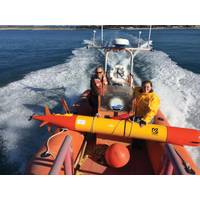
MBARI Works at Unlocking Ocean Biology
day missions before needing to be recovered and recharged. An internal buoyancy engine also permits fine-level depth control, important behaviour when trying to sample the biologically rich thin-layers found throughout the oceans.This technology was put to the test during a project with the University of Hawaii, who acquired three LRAUVs with ESPs. The goal was to allow greater access to the sea than their ship schedule allowed in order to study the microbial populations that inhabit a Deep Chlorophyll Maximum (DCM – a region ~120m deep with maximum concentrations of chlorophyll).The culmination
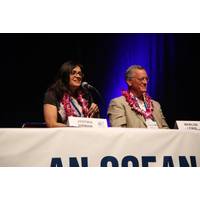
OceanObs’19: Innovation Expanding Ocean Observations
Waves, Breaking Barriers. This event was sponsored by Schmidt Marine Technology Partners and was focused on women’s instrumental role in ocean science, leadership, and mentorship. A panel of four leading women in ocean science offered insights from their own careers. Rosie Alegado from the University of Hawaii served as moderator and the panelists included Barb Kirkpatrick from the US, Nelly Florida from Indonesia, and Juliet Hermes from South Africa. They were joined by almost 40 more women in the field who served as ambassadors to answer questions and inspire discussion during a networking reception
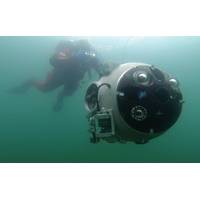
Subsea Mining: The Next Big Thing for UUVs
for survey and AUV operations was quoted as saying, “our equipment and competency is very well suited to this emerging market”. He said deep-sea mining — seen as poised to take off — mostly requires AUVs for mapping. Meanwhile, at INESC TEC and elsewhere, including the University of Hawaii, underwater mining tools target the whole gamut of mining-support tasks.High-stakes opsSome high-capital mining and subsea players have already surged ahead, if mostly in the dredging of coastal zones. Earlier out than Norway, Papua New Guinea, Japan and the Cooke Islands have created rules
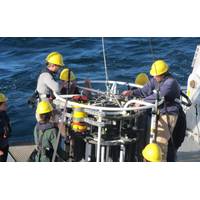
Full-Depth Current Profiling Around the Global Ocean
expensive. Scientists sought a method that was more economical, easier to use, and available to a wider audience.Over several years, a handful of experts adapted ADCPs to meet this demand. They devised the LADCP method and processing (https://goo.gl/1TGXBn). Key input came from staff at the University of Hawaii and Lamont Doherty Geological Observatory in USA and IFM Kiel in Germany.Lowered ADCP MethodDeep current profiling measures below the acoustic range of ship-mounted profilers. Attached to a lowered hydrographic package, compact self-contained ADCPs pass through the water column. During descent



 February 2024
February 2024





